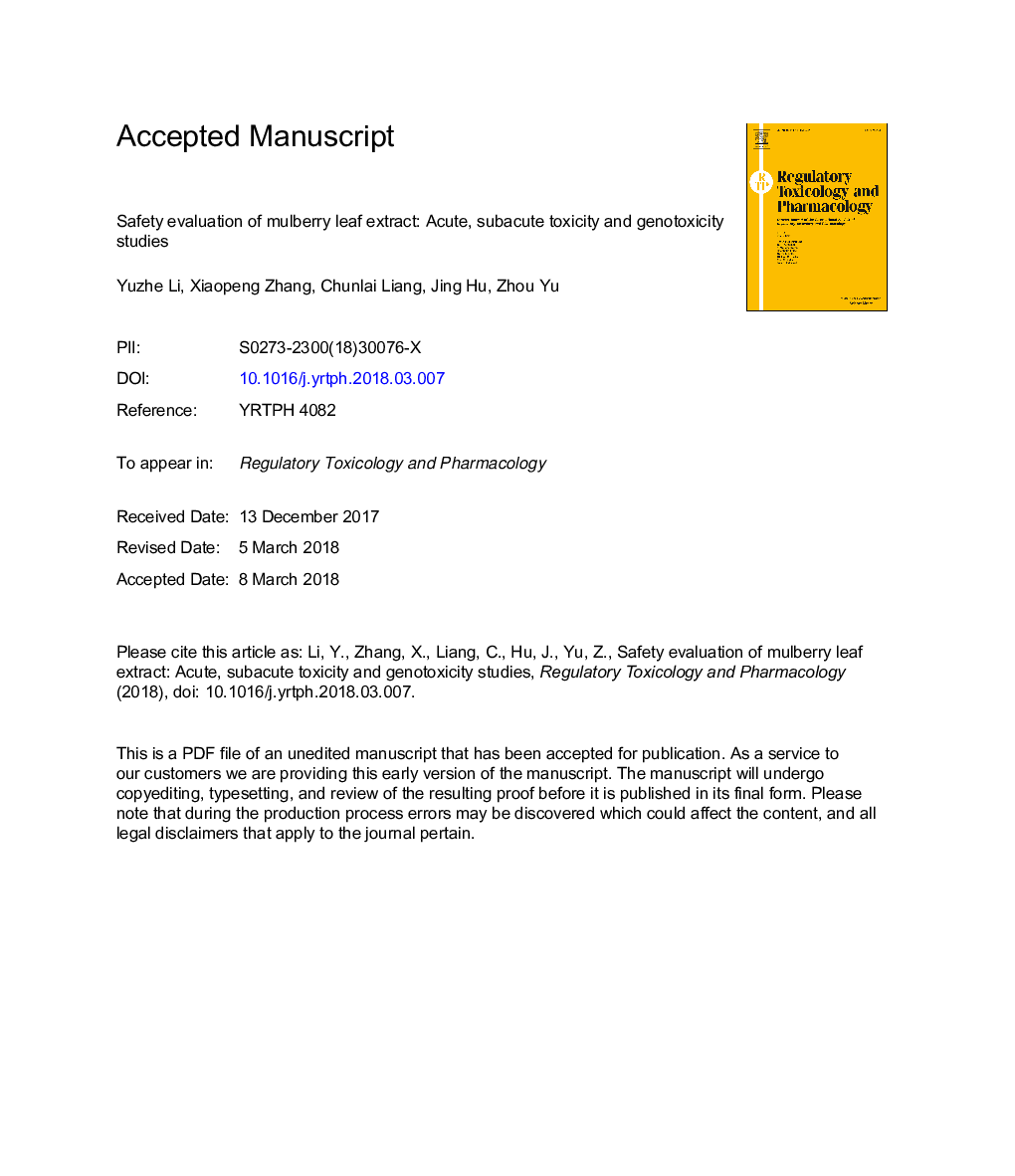| Article ID | Journal | Published Year | Pages | File Type |
|---|---|---|---|---|
| 8551157 | Regulatory Toxicology and Pharmacology | 2018 | 25 Pages |
Abstract
Mulberry (Morus alba L.) leaves are of broad popular use for food or remedy purposes due to their bioactive properties, especially antidiabetic activity and antioxidative activity. The present study aimed to assess the toxicological profile of mulberry leaf extract (MLE), through acute, subacute toxicity and genotoxicity tests. Male and female rats received by gavage 15.0â¯g/kg bw of MLE in the acute toxicity test, and 0, 1.88, 3.75 and 7.50â¯g/kgâ¯bw/d of MLE for subacute toxicity test. In the acute toxicity study, no mortality or behavioral changes were observed, indicating the LD50 is higher than 15.0â¯g/kg bw. In the subacute toxicity test, no significant changes were observed in hematological, biochemical or histopathological parameters in the animals exposed. The no-observed-adverse-effect level in the subacute toxicity study was considered to be 7.50â¯g/kgâ¯bw/d, the highest dose tested. In the genotoxicity study, MLE showed no mutagenic activity in the Ames assay and no evidence of potential to induce chromosome aberrations or sperm abnormalities in mice exposed to 10â¯g/kg bw. Collectively, aqueous extract of mulberry leaves could be considered safe, and the results support the application of MLE as novel food ingredient or product.
Keywords
MLENOAELMitomycin CGLPPLTDNJFDAALTNaN3RBC1-deoxynojirimycinWBCALBGSTGSHCHOLCREPCELD50MMCRed blood cells1,8-Dihydroxyanthraquinone2-AF2-aminofluorene4-nitro-o-phenylenediamineASTAspartate aminotransferaseAlanine aminotransferaseAlbuminALPAmes assaySperm abnormalityUnited States Food and Drug AdministrationSafety assessmentpolychromatic erythrocytesTriglyceridesGood Laboratory PracticeBUNsodium azideno-observable-adverse-effect levelGenotoxicityPlatelet countSubacute toxicityRatmedian lethal doseMicronucleusurea nitrogenHemoglobinbody weightcreatinineTotal proteinscholesterolwhite blood cellsGlutathioneGlutathione transferaseBlood glucose
Related Topics
Life Sciences
Environmental Science
Health, Toxicology and Mutagenesis
Authors
Yuzhe Li, Xiaopeng Zhang, Chunlai Liang, Jing Hu, Zhou Yu,
